|
|
|
Sort Order |
|
|
|
Items / Page
|
|
|
|
|
|
|
| Srl | Item |
| 1 |
ID:
103106
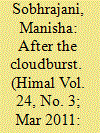

|
|
|
| 2 |
ID:
116446
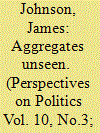

|
|
|
|
|
| Publication |
2012.
|
| Summary/Abstract |
Photography, understood as a technology for amplifying imagination, affords a useful tool for coming to terms with the massive forced migration caused by the Katrina catastrophe. Specifically, photographic projects by Robert Polidori and Richard Misrach reveal the exigencies of communicating in the wake of the disaster.
|
|
|
|
|
|
|
|
|
|
|
|
|
|
|
|
| 3 |
ID:
095854
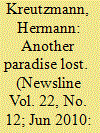

|
|
|
| 4 |
ID:
145393
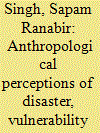

|
|
|
|
|
| Summary/Abstract |
A structured analysis of social inequalities related to hazards allows for a clarification and redefinition of the involved citizenship rights and their implications for the trust of citizens in public institutions. The concerned individuals, social groups and communities must participate in the knowledge production process about the territory and in the mapping of social vulnerability.
|
|
|
|
|
|
|
|
|
|
|
|
|
|
|
|
| 5 |
ID:
132983
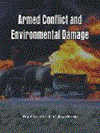

|
|
|
|
|
| Publication |
New Delhi, Vij Books India Pvt Ltd, 2014.
|
| Description |
xii, 362p.Hbk
|
| Standard Number |
9789382652779
|
|
|
|
|
|
|
|
|
|
|
|
Copies: C:1/I:0,R:0,Q:0
Circulation
| Accession# | Call# | Current Location | Status | Policy | Location |
| 057850 | 355.02/JHA 057850 | Main | On Shelf | General | |
|
|
|
|
| 6 |
ID:
138176
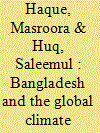

|
|
|
|
|
| Summary/Abstract |
The yearly international climate change negotiations, also known as Conferences of Parties (COPs), are large and formidable affairs. Under the aegis of the United Nations Framework Convention on Climate Change (UNFCCC), government ministers, bureaucrats, and other delegates from developed and developing countries come to hash out compromises. Civil society organizations, activists, researchers, scientists, UN officials, journalists, students, and private-sector leaders come from all over the world to protest, network, and exchange ideas.
|
|
|
|
|
|
|
|
|
|
|
|
|
|
|
|
| 7 |
ID:
076934
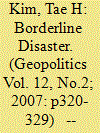

|
|
|
|
|
| Publication |
2007.
|
| Summary/Abstract |
This article argues that the territorial trap and the social amplification of risks associated with a porous border have led to an increased vulnerability for unauthorised migrants along the US-Mexico boundary. A contradiction of globalisation is discussed examining how goods and capital are given more guarantees and social protections than certain people. The concept of escrow is introduced as a mitigation measure to reduce human vulnerability. Examples of other comparable and contentious programs are discussed to support the need for such measures. The discussions and methods outlined in this article, attempt to bring about an increased awareness of the territorial trap and the role it plays in producing the hazardous conditions along the US-Mexico boundary.
|
|
|
|
|
|
|
|
|
|
|
|
|
|
|
|
| 8 |
ID:
109035
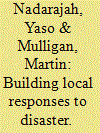

|
|
|
|
|
| Publication |
2011.
|
| Summary/Abstract |
While there has been much discussion in international disaster management literature in recent years of the need to give affected communities much more 'ownership' of recovery and rehabilitation pro-jects and programs, there is little real understanding of what this might mean in practice. There are many calls for post-disaster recovery programs to reduce vulnerability to future risks, or to 'build back better'. Drawing from an intense study of social recovery and community rebuilding across five tsunami-affected local areas in Sri Lanka and southern India, this article affirms the need for greater community 'guidance' of disaster recovery but it argues that different forms of community engagement are required for different stages in the long process from relief to recovery. It argues that 'build back better' is possible, but only if aid and other related agencies work more closely with existing capacities for resilience within the affected communities and contribute towards their legitimacy.
|
|
|
|
|
|
|
|
|
|
|
|
|
|
|
|
| 9 |
ID:
098756
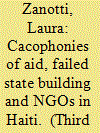

|
|
|
|
|
| Publication |
2010.
|
| Summary/Abstract |
The January 2010 earthquake in Haiti was a catastrophe not only for the loss of life it caused, but also because it destroyed the very thin layer of state administrative capacity that was in place in the country. This article argues that the fragility of the Haitian state institutions was exacerbated by international strategies that promoted NGOs as substitutes for the state. These strategies have generated a vicious circle that, while solving immediate logistical problems, ended up weakening Haiti's institutions. However, the article does not call for an overarching condemnation of NGOs. Instead, it explores two cases of community-based NGOs, Partners In Health and Fonkoze, that have contributed to creating durable social capital, generated employment and provided functioning services to the communities where they operated. The article shows that organisations that are financially independent and internationally connected, embrace a needs-based approach to their activities and share a long-term commitment to the communities within which they operate can contribute to bringing about substantial improvement for people living in situations of extreme poverty. It concludes that in the aftermath of a crisis of the dimension of the January earthquake it is crucial to channel support towards organisations that show this type of commitment.
|
|
|
|
|
|
|
|
|
|
|
|
|
|
|
|
| 10 |
ID:
151145


|
|
|
|
|
| Summary/Abstract |
Two million people were affected in the floodplains and low-lying areas in Sirajgang in 2012. Seven hundred and fifty families were made homeless and forced to live in small temporary huts on the river protection embankments. Unemployment rose alarmingly and the jobless left their villages to find work in larger cities, leaving behind their vulnerable and insecure families. Consequently, women were increasingly required to take on totally unfamiliar roles. Our research utilised in-depth interviews with women managing without the support of their husbands. Key findings highlighted that community resilience would improve if these women were engaged at the local operational level of disaster management.
|
|
|
|
|
|
|
|
|
|
|
|
|
|
|
|
| 11 |
ID:
170838
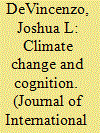

|
|
|
|
|
| Summary/Abstract |
In the aftermath of 9/11, the National Center for Disaster Preparedness (NCDP), and the Earth Institute of Columbia University launched the American Preparedness Project in order to survey public perceptions on disaster preparedness. The report found that 65% of Americans expressed worry that climate change will have an impact on their community's exposure to disasters. The NCDP recommended integrating the impact of climate change into communications and preparedness programs, given that a comprehensive understanding of the concerns of individuals and families is critical to emergency planning efforts. The NCDP adopted a user-centered design approach to create more informed risk communications and instructional decisions to work towards a pedagogy of climate change. Today, the NCDP deploys online and in-person trainings across the United States where the Center directly engages with the public on disaster preparedness, response, recovery, and resiliency. Leveraging these experiences, the NCDP collects data to analyze the learning efficacy of communication methods of disaster focused curricula. However, despite these strides toward a methodology of teaching climate change, there are several discrepancies in the U.S. public opinion on the degree of urgency in which to prepare for the risks of climate change. Discrepancies are tied to a multitude of factors including partisan affinity, dynamics of in-group or out-group, impersonal versus personal interaction, and perceived thresholds of distance and time. A key relationship between public discourse, cognition, and instruction are introduced in this paper to better set the foundation for a pedagogy of climate change. This paper also provides data-driven recommendations derived from satisfaction surveys and belief statements from learners that have participated in the NCDP's course content on climate change. The recommendations focus on risk communication strategies that can adequately address public opinion discrepancies on the risk of climate change, impact decision making, as well as improve learner understanding of climate change. The solution is not simply to provide more information but to evaluate how to implement different delivery methods aligned with public learning needs and capacities.
|
|
|
|
|
|
|
|
|
|
|
|
|
|
|
|
| 12 |
ID:
190795


|
|
|
|
|
| Summary/Abstract |
How do high mountain communities, facing the grave effects from climate change and economic impacts of the COVID-19 pandemic on the local tourism industry, perceive and navigate multiple protracted disasters? This article takes up this question from the perspective of a specific mountain community, that of Mustang, a culturally Tibetan region of Nepal bordering the Tibet Autonomous Region (TAR), China. Our findings stem from collective ethnographic research conducted with Mustangi communities in Nepal and among the diaspora in New York City to investigate the nexus between high mountain livelihoods, particularly tourism, and the consequences of two distinct yet interlocking disasters: climate change and the global health crisis of the COVID-19 pandemic. We argue that the pandemic has undermined elements of Mustang’s economic future and simultaneously prompted a resurgent appreciation for and reliance on more traditional modes of community governance and social support. The fact that these dynamics are unfolding amidst ever-present concerns over the effects of climate change in the Himalayas, against the backdrop of labor- and education-driven outmigration, adds a profound layer of complexity to thinking about the future of tourism but also of Himalayan lives, from built infrastructures to the community resilience needed to sustain both.
|
|
|
|
|
|
|
|
|
|
|
|
|
|
|
|
| 13 |
ID:
148139
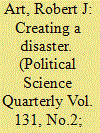

|
|
|
|
|
| Summary/Abstract |
ROBERT J. ART argues that an open door membership policy will destroy NATO and that there is a better alternative to create a security structure for Europe.
|
|
|
|
|
|
|
|
|
|
|
|
|
|
|
|
| 14 |
ID:
126164
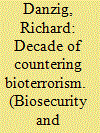

|
|
|
|
|
| Publication |
2012.
|
| Summary/Abstract |
The fear and disruption caused by the 2001 anthrax attacks understandably led Americans to seek enhanced biodefenses. However, the path followed since those attacks has left the country inadequately prepared to face further risks from biological attacks. Why has security against these threats been only partially achieved? This article suggests that our responses over the past decade can be sorted into 4 levels in order of increasing difficulty. First, we rapidly appropriated funds, augmented personnel, and mandated reorganization of agencies. Though not easy to accomplish, these steps were easily conceptualized and, whatever their imperfections, could rather assuredly be achieved. A second level was more demanding, but also quite achievable. It involved the amplification of ongoing efforts. These efforts sometimes suffered as they scaled up, but, though they were qualified by delays and uncertainties, we can point to real achievements at this level. A third level was more difficult: It required evolving new strategies to deal with this largely unprecedented problem. In this regard, we have so far had only glimmers of possibility. At a fourth level, our performance and our prospects are worse still. At this level, our problems stem from resistances inherent in our country's cultural and political framework. This article identifies some of these problems and suggests, regrettably, that they are not likely to be resolved until change is catalyzed by further, and more dramatically traumatic, attacks or natural disasters. If this situational assessment is correct, what remedial strategies should we pursue? The article distinguishes 3 strategic approaches: an evolutionary one in which the U.S. continues advancing along its present path; a radical approach that attempts to address the fourth-level issues; and a third approach that prepares for punctuated evolution. This third approach accepts the improbability of level 4 change either by gradual evolution or by radical argument, but asserts that it is possible to lay the conceptual groundwork now for the radical changes that will be possible, even demanded, after a catastrophic incident. This approach, neglected at present, would be a valuable addition to our present efforts.
|
|
|
|
|
|
|
|
|
|
|
|
|
|
|
|
| 15 |
ID:
143545
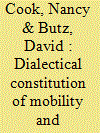

|
|
|
|
|
| Summary/Abstract |
This paper contributes to the critical mobilities literature by analysing local mobilities in Gojal, northern Pakistan in the aftermath of the 2010 Attabad Landslide, in order to develop new insights regarding the dialectical relationship between mobility and immobility. The landslide destroyed a large section of the Karakoram Highway, the region's arterial roadway. Among its disastrous effects was prolonged disruption of the accustomed movements of 20,000 villagers stranded north of the slide. To show how mobility is constituted dialectically in relation to immobility in this context, we detail the social and economic demobilisations Gojalis faced when the highway became impassable, and outline new mobilities they developed to mitigate the disaster of protracted strandedness. Gojalis responded to demobilisation by remobilising, at different scales, along new routes, in different directions and via new mobility platforms, thereby re-establishing circulation as a paradigm of everyday life and demonstrating the paper's argument that disasters are social processes that have simultaneously demobilising and remobilising effects. We conclude that nurturing a multiplicity of mobile relations and practices in several directions and across scales during the disaster recovery process will help Gojalis avoid a similar mobility disaster in the future.
|
|
|
|
|
|
|
|
|
|
|
|
|
|
|
|
| 16 |
ID:
173920
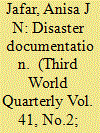

|
|
|
|
|
| Summary/Abstract |
This study investigates clinical practitioners’ use of medical documentation during sudden-onset disasters in order to better understand how we can improve practice. Thirteen participants, representing nine nationalities and six clinical disciplines (with the collective working experience of at least 15 different organisations providing disaster response), underwent semi-structured interviews using an inductive approach based in grounded theory. The initial codes and themes were analysed over four coding rounds and developed into selective codes. The findings suggest that documentation is overwhelmingly de-prioritised in disasters due to competing demands; there is little incentive to complete documentation at an organisational or government level; practitioners acknowledge the importance of and need for adequate documentation; paper documentation still has its place whilst electronic approaches have both benefits and drawbacks; and disasters require bespoke documentation solutions. Development of the emergency medical team (EMT) ‘data management’ role within EMTs may be one way to focus teams on key areas of improvement.
|
|
|
|
|
|
|
|
|
|
|
|
|
|
|
|
| 17 |
ID:
079637
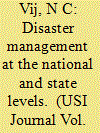

|
|
|
| 18 |
ID:
107744
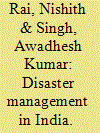

|
|
|
|
|
| Publication |
Lucknow, New Royal Book Company, 2007.
|
| Description |
xi, 350p.
|
| Standard Number |
9788189267574, hbk
|
|
|
|
|
|
|
|
|
|
|
|
Copies: C:1/I:0,R:0,Q:0
Circulation
| Accession# | Call# | Current Location | Status | Policy | Location |
| 056238 | 363.340954/RAI 056238 | Main | On Shelf | General | |
|
|
|
|
| 19 |
ID:
145375
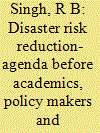

|
|
|
|
|
| Summary/Abstract |
According to recent World Disaster Reports the percentage of occurrences of flood is highest (43 per cent) with 3062 occurrences of the total disasters during 1995-2015 followed by storms (28 per cent) with 2018 occurrences. The volcanic activities have the lowest occurrence of only 111 events (2 per cent). Others include earthquake (8 per cent), extreme temperature (6 per cent), landslide (5 per cent), drought (5 per cent) and wildfire (4 per cent). According to EM-DAT CRED the hydrological and meteorological disasters are causing loss of about USD 250 million every year.
|
|
|
|
|
|
|
|
|
|
|
|
|
|
|
|
| 20 |
ID:
118856
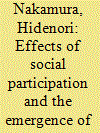

|
|
|
|
|
| Publication |
2013.
|
| Summary/Abstract |
An online social survey was conducted to reveal household electricity-saving behaviour and its relationship with participation in social group activities, as well as face-to-face and online social interactions, i.e., information sources used and information dissemination through personal networks, in a disaster-affected region of Kanagawa, Japan, during the summer of 2011. The study confirms the positive contribution of respondents' participation in social group activities to the number of power-saving practices conducted. It also reveals the emergence of voluntary social face-to-face and/or online interactions for power-saving. The study suggests it would be useful to provide effective information to proactive individuals who are closely engaged in power-saving in households and who are proactively disseminating power-saving information practices to others. Such individuals include (1) women who have school-children and who are proactively engaging in the social interactions of their children's schools, other parents, neighbours, as well as their own parents and relatives; and (2) men and women who are using various kinds of online interaction tools and are also engaged in face-to-face social interactions.
|
|
|
|
|
|
|
|
|
|
|
|
|
|
|
|
|
|
|
|
|